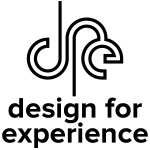“Data gives us an opportunity for to reach out to more users and understand them better,” Michael Lai writes in “When Does Quantity Become Quality?” an article we published last month.
“This comes with greater responsibility for UX professionals, who need to exercise more rigorous testing and validation of the ‘insights’ gleaned before rushing to implementing them.”
Lai suggests taking a balanced approach to wrangling big data—one that combines qualitative and quantitative research methods in order to forge a deeper understanding of our users and their experiences. “With all the data we’re collecting, it’s important to step back and think about what all of these values represent,” he concludes.
It’s a basic fact that the rate at which data is created and collected never ceases to increase. The sheer volume of data we’re sitting on is a theoretical treasure trove for understanding the past and present and for predicting the future. To unlock the value of “big data,” we need new ways of connecting, interpreting, and visualizing it.
The DfE Bringing Order to Big Data award recognizes compelling examples of the design of digital visualizations, interfaces, interaction models, and other user experience solutions that have advanced understanding of complex questions.
If you know of prodcuts, services, agencies, companies, or teams that have found compelling ways of getting at golden nuggets in the mountains of big data, nominate them. If you think that your product/service/agency/company/team has the answer, apply for this award right now!
Image of Chinese cabinet courtesy Shutterstock








